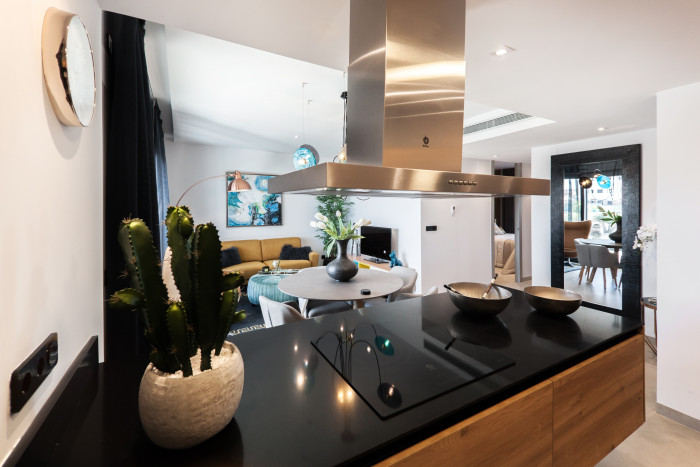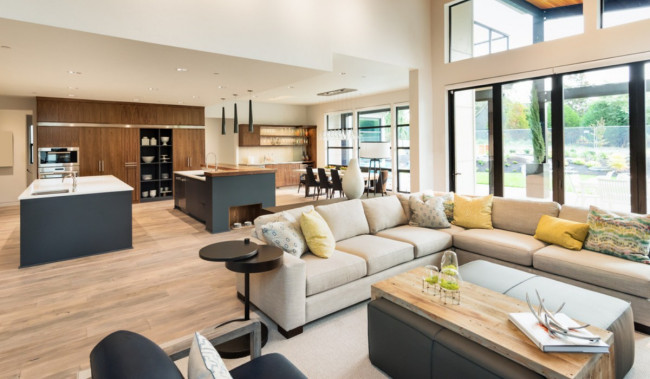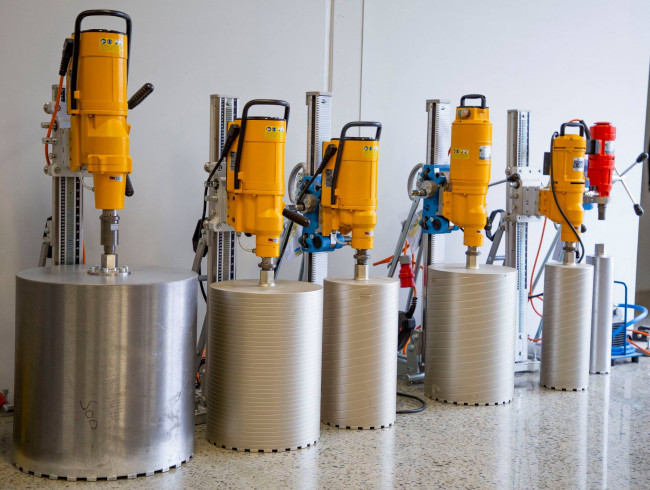In this comprehensive guide, we'll delve into the realm of Modular Kitchens for Indian Homes, tracing their evolution, highlighting the benefits, delving into designs, and detailing the installation process. Let's embark on a journey to revolutionize the heart of your home.
Introduction
The kitchen isn't just where meals are prepared; it's the soul of any home. In Indian households, where culinary traditions thrive and family bonds are nurtured through shared meals, the significance of a well-designed kitchen cannot be overstated. This is where modular kitchens step into the spotlight.
Modular kitchens have ushered in a revolution in Indian homes, effortlessly marrying practicality, style, and convenience. In this article, we'll guide you through the world of Modular Kitchen designs in India, from their inception to the latest trends and practical tips for creating your ideal kitchen.

The Evolution of Modular Kitchens
Early Beginnings
The roots of modular kitchens can be traced back to the early 20th century, a time when mass production methods were reshaping various industries. This era marked the transformation of kitchens from mere utilitarian spaces to hubs of social activity.
Rise in Popularity
In India, the late 1990s witnessed the surge in popularity of modular kitchens. The shift towards smaller, nuclear families and the aspiration for contemporary living spaces fueled the adoption of this innovative concept.
Current Trends
Today, modular kitchens are a staple in urban Indian homes. The market is brimming with innovative designs and advanced technology, offering homeowners unprecedented flexibility to customize their kitchens.
The Benefits of Modular Kitchens
Modular kitchens bring a host of advantages that make them an enticing choice for Indian households:
Customization: One of the primary advantages of modular kitchens is their flexibility. They can be customized to suit your specific needs and preferences. You have the freedom to choose everything from the layout to the materials and finishes.
Optimal Space Utilization: Modular kitchens are designed to make the most of available space. They offer clever storage solutions and ensure every inch is efficiently used. This is particularly beneficial in homes with limited kitchen space.
Easy Maintenance: Modular kitchens typically use materials that are easy to clean and maintain. This is crucial in Indian households where cooking often involves various spices and oils.
Aesthetic Appeal: These kitchens come in a wide range of designs and finishes, allowing you to match them with your home's decor. Whether you prefer a modern, minimalist look or a more traditional style, there's a modular kitchen design to suit your taste.
Efficiency in Cooking: The layout of modular kitchens is carefully planned to optimize the cooking process. Everything is within easy reach, making meal preparation more efficient and enjoyable.
Enhanced Resale Value: Investing in a modular kitchen can significantly increase the resale value of your home. Potential buyers often appreciate the convenience and aesthetics of a well-designed modular kitchen.
Durability: Modular kitchens are constructed using high-quality materials, ensuring their longevity. They are built to withstand the wear and tear of daily cooking activities.
Flexibility for Future Modifications: If your needs change over time, modular kitchens can be easily modified or expanded. You can add new cabinets, countertops, or other components without significant hassle.
Organization: These kitchens promote organization with dedicated spaces for utensils, appliances, and cookware. This makes it easier to keep your kitchen tidy and clutter-free.
Innovative Features: Many modular kitchens incorporate modern technology and innovative features. From built-in appliances to smart storage solutions, these kitchens can be equipped with the latest advancements in kitchen design.
Designing Your Modular Kitchen
Layout Options
When contemplating your modular kitchen, consider popular layouts such as the L-shaped, U-shaped, or parallel designs. Each layout offers distinct advantages in terms of functionality and aesthetics.
L-Shaped Kitchen: The L-shaped layout is a common choice, especially for smaller kitchens. It involves two adjacent walls forming an "L" shape. This design provides ample counter space and allows for efficient workflow, with separate areas for food preparation and cooking.
U-Shaped Kitchen: The U-shaped layout maximizes space utilization by utilizing three walls. It creates a cozy and efficient workspace with plenty of storage and counter space. U-shaped kitchens are ideal for larger kitchens with more room to spare.
Parallel or Galley Kitchen: In a parallel or galley kitchen, two parallel countertops run along opposite walls, creating a corridor-like layout. This design is excellent for small or narrow spaces, offering a straightforward and efficient work triangle for cooking.
Island Kitchen: Island kitchens incorporate an island or freestanding counter in the center of the kitchen. This design not only provides extra workspace but also serves as a focal point for socializing. It's a popular choice for open-plan living areas.
Single Wall Kitchen: A single-wall kitchen, as the name suggests, consists of all kitchen elements arranged along a single wall. This minimalistic design is suitable for compact spaces or as part of an open-plan layout, where the kitchen merges seamlessly with the living area.
Peninsula Kitchen: Similar to the island kitchen, a peninsula kitchen includes a connected countertop extending from one of the walls. It creates a semi-open space, often used as a breakfast bar or for additional workspace.
G-Shaped Kitchen: The G-shaped layout is an extension of the U-shaped design, with an extra countertop or peninsula attached to one of the ends. This additional space can serve as a dining area or provide more storage and prep space.
Open Plan Kitchen: In modern homes, open-plan kitchens are gaining popularity. These kitchens are integrated into the larger living area, often separated by a kitchen island or a partition. Open plan layouts encourage social interaction while cooking.
Kitchen with Walk-In Pantry: For those who require extensive storage, a walk-in pantry can be integrated into the kitchen design. This allows for convenient access to dry goods, appliances, and kitchenware without cluttering the main kitchen area.
Kitchen with Breakfast Nook: Some modular kitchens feature a cozy breakfast nook within the kitchen space. This provides a comfortable spot for informal meals or a place to enjoy a cup of coffee.
Material Selection
The choice of materials plays a pivotal role in the kitchen's durability and visual appeal. Opt for robust materials like granite or quartz for countertops and laminated cabinets to withstand the rigors of Indian cooking.
Color Schemes
The selection of the right color scheme is pivotal. Lighter shades can create an illusion of spaciousness in smaller kitchens, while bolder colors can infuse drama and elegance.
Lighting
The importance of proper lighting is often underestimated in kitchen design. Adequate task and ambient lighting can significantly enhance both functionality and ambiance.
The Installation Process
The installation of a modular kitchen is a systematic process that involves several stages:
Design Consultation: Collaborate closely with a designer to craft a customized kitchen plan tailored to your needs.
Choosing Materials: Select the materials and finishes for cabinets, countertops, and backsplashes in accordance with your design.
Manufacturing: Components are fabricated off-site and then delivered to your home, ready for installation.
Installation: Skilled technicians assemble and install the kitchen components according to the agreed-upon design.
Quality Check: Ensure all elements are meticulously installed and functioning as intended.
Finishing Touches: Add hardware, accessories, and lighting to put the final polish on your kitchen's look.
Frequently Asked Questions
Q: What is the cost range for a modular kitchen in India?
A: The cost can vary widely depending on factors like size, materials, and design intricacy. On average, it falls within the range of ₹1.5 lakh to ₹5 lakh.
Q: Can I customize my modular kitchen to suit my specific needs?
A: Absolutely! One of the standout features of modular kitchens is their flexibility and ability to be fully customized.
Q: How long does it take to install a modular kitchen?
A: Typically, the installation process spans 2-4 weeks, although this timeline can vary based on factors like design complexity and other logistical considerations.
Q: Are modular kitchens easy to maintain?
A: Yes, they are designed for easy maintenance. Most materials used are resistant to stains and can be cleaned with ease.
Q: Can I add more cabinets or components to my modular kitchen later?
A: Indeed, modular kitchens are designed with flexibility in mind. You can easily incorporate additional components or make modifications in the future.
Q: Are modular kitchens suitable for small homes?
A: Yes, they are ideal for smaller homes, as they are adept at maximizing space utilization.
Conclusion
In summary, modular kitchens have revolutionized the way Indian homes approach kitchen design. They offer a harmonious blend of style, functionality, and convenience, making them an ideal choice for modern households. Regardless of whether you reside in a cozy apartment or a spacious villa, modular kitchens can be tailored to meet your unique requirements. So, why delay? Embark on your journey to create the kitchen of your dreams.
Elevate your living space, enhance your culinary experiences, and embrace the future of kitchen design with a modular kitchen designed for Indian homes.
















